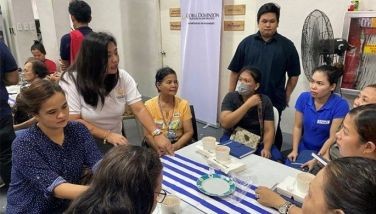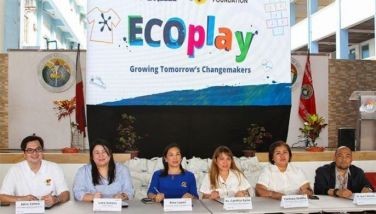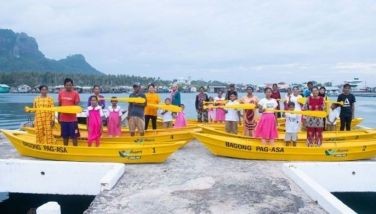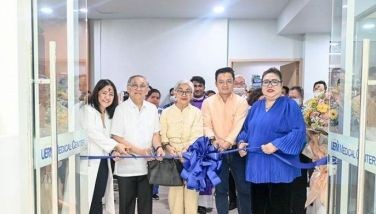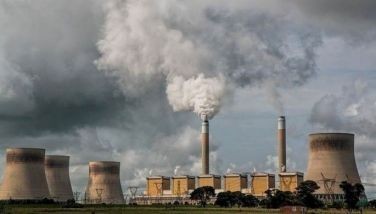WB approves $650-M ODA package for RP in next 2 years
May 16, 2003 | 12:00am
A total of approximately $650 million in official development assistance (ODA) has been programmed for the Philippines for the next two years, National Economic and Development Authority (NEDA) said at the close of the annual Government of the Philippines (GOP)-WB Country Programming Exercises.
NEDA assistant director-general for national development Rolando Tungpalan said the government and the WB have come up with a list of six projects and one program loan totaling some $290 million for 2004.
He said the six projects include: the Rural Power Project, Judicial Reform Support Project; Laguna de Bay Institutional Strengthening and Community Participation Project; Women’s Health II; Urban Shelter and Community Infrastructure Project (a small Learning and Innovation Loan or LIL); and the Land Administration and Management Project. A $200-million proposed program loan for Public Finance Strengthening is also included in the 2004 program.
For 2005, a tentative list of projects totaling approximately $360 million was agreed upon and include: Health Sector Reform; Diversified Farm Income/Agriculture Modernization; Manila Third Sewerage Project; Cities Development Project; Mindanao Rural Development Project II; and a Community-Managed Agrarian Reform (a LIL). A second program loan for 2005 in the amount of $150 million is also included in the tentative list.
"In principle, these are the projects that both the government and World Bank will be pursuing in 2004 and 2005 but these projects are still subject to the outcome of the Investment Coordination Committee evaluation process." Tungpalan said.
In his opening statement at the programming exercise, WB Country Director for the Philippines Van Pulley reconfirmed that the government and the Bank are working within a common framework as the WB’s Country Assistance Strategy (CAS) is closely aligned with the Medium Term Philippine Development Plan (MTPDP). He also emphasized that the Bank recognizes the constrains faced by the government in terms of the tight budget situation, as well as the impact this would have on the lending program. In addition to the lending program, the Bank will continue to provide non-lending assistance on a range of mutually-agreed topics as discussed at the meeting.
"The World Bank is particularly gratified with the dramatic improvement in the quality and pace of the implementation of the Bank’s Philippines portfolio," Pulley said. He noted that disbursement ratio almost doubled from 12 percent in end 2001 to the projected level of 22 percent in end 2003.
This virtual doubling in the disbursement ratio implies a shorter average project implementation period from eight years to 4.5 years, translating to faster delivery of services and benefits to the poor. The big reduction in the number of projects with implementation problems also indicates a substantive improvement in the portfolio quality. All these positive developments in the portfolio resulting from the government counterparts’ efforts reinforce the Bank’s confidence to continue its support to the Philippines in its development agenda."
NEDA assistant director-general for national development Rolando Tungpalan said the government and the WB have come up with a list of six projects and one program loan totaling some $290 million for 2004.
He said the six projects include: the Rural Power Project, Judicial Reform Support Project; Laguna de Bay Institutional Strengthening and Community Participation Project; Women’s Health II; Urban Shelter and Community Infrastructure Project (a small Learning and Innovation Loan or LIL); and the Land Administration and Management Project. A $200-million proposed program loan for Public Finance Strengthening is also included in the 2004 program.
For 2005, a tentative list of projects totaling approximately $360 million was agreed upon and include: Health Sector Reform; Diversified Farm Income/Agriculture Modernization; Manila Third Sewerage Project; Cities Development Project; Mindanao Rural Development Project II; and a Community-Managed Agrarian Reform (a LIL). A second program loan for 2005 in the amount of $150 million is also included in the tentative list.
"In principle, these are the projects that both the government and World Bank will be pursuing in 2004 and 2005 but these projects are still subject to the outcome of the Investment Coordination Committee evaluation process." Tungpalan said.
In his opening statement at the programming exercise, WB Country Director for the Philippines Van Pulley reconfirmed that the government and the Bank are working within a common framework as the WB’s Country Assistance Strategy (CAS) is closely aligned with the Medium Term Philippine Development Plan (MTPDP). He also emphasized that the Bank recognizes the constrains faced by the government in terms of the tight budget situation, as well as the impact this would have on the lending program. In addition to the lending program, the Bank will continue to provide non-lending assistance on a range of mutually-agreed topics as discussed at the meeting.
"The World Bank is particularly gratified with the dramatic improvement in the quality and pace of the implementation of the Bank’s Philippines portfolio," Pulley said. He noted that disbursement ratio almost doubled from 12 percent in end 2001 to the projected level of 22 percent in end 2003.
This virtual doubling in the disbursement ratio implies a shorter average project implementation period from eight years to 4.5 years, translating to faster delivery of services and benefits to the poor. The big reduction in the number of projects with implementation problems also indicates a substantive improvement in the portfolio quality. All these positive developments in the portfolio resulting from the government counterparts’ efforts reinforce the Bank’s confidence to continue its support to the Philippines in its development agenda."
BrandSpace Articles
<
>
- Latest
- Trending
Trending
Latest
Trending
Latest
Recommended










